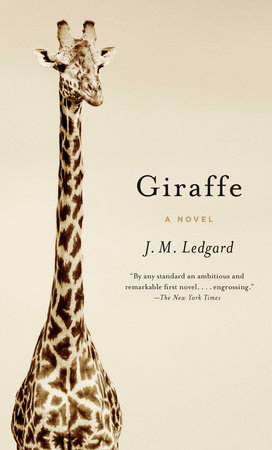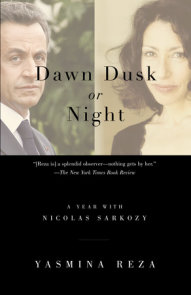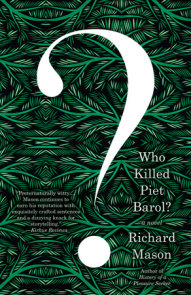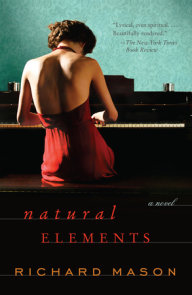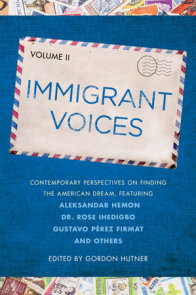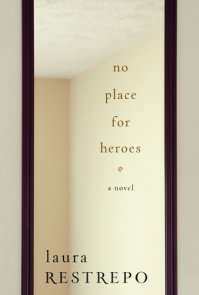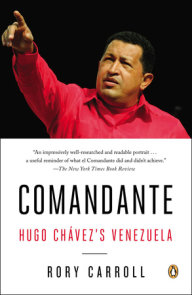READERS GUIDE
Questions and Topics for Discussion
INTRODUCTION
The time: the 1970s. The location: Czechoslovakia, a place then formally known as the Ceskoslovenska Socialisticka Republika, or CSSR, a so-called workers’ paradise. The citizens refer to their fearful time in history as “the communist moment” and though they hope that the time of Soviet domination will soon pass, it appears that it may endure for centuries. Into this gray, degraded landscape comes a band of improbable immigrants—thirty-odd giraffes captured on the African savannah and shipped to Czechoslovakia to become the world’s largest herd of giraffes in captivity. The arrival of the animals is ballyhooed as a triumph of the socialist state, and there is euphoric talk of breeding a new Czechoslovakian subspecies, the Camelopardalis bohemica. For a time, the animals thrive. Then suddenly, on the eve of the May Day celebration of 1975, the zoo where the giraffes are held is closed without explanation. When it reopens, the giraffes are gone. The townspeople are instructed to act as if the animals had never been there, and all inquiries into the event are strictly forbidden. This true story forms the basis for Giraffe, a scintillating debut novel by Economist foreign correspondent J. M. Ledgard. Beginning with the birth of one of the doomed giraffes and moving inexorably to the horrifying end of her entire herd, Giraffe is as merciless in its exposure of the failures of totalitarianism as it is tenderly insightful in its meditation on individual searches for beauty and transcendence.
To tell his tale of captivities, tentative hopes, and ultimate betrayals, Ledgard adopts a fascinating array of personae, including Emil, a hemodynamicist entrusted to accompany the herd on the last leg of their journey up the Elbe River (the Labe in Czech), and Amina, a somnambulistic factory worker whose encounters with the giraffes help her to forget her troubled past and joyless present. Astonished by the complexities of the giraffes’ physiology and recalled by their presence to a sense of childish wonder, Emil and Amina find themselves transformed by the gentle giants, whose aloof, towering beauty inspires their human admirers always to look up—not only to meet the animals’ placid gazes but also to seek a spiritual deliverance from the grim realities of the socialist state. At key moments we are privy as well to the thoughts of Snehurka, a female giraffe whose stately, silent grace raises her above the pettiness of the human beings who presume to possess and control her.
Erudite and brooding, Giraffe is much more than a chronicle of a state-sponsored experiment gone tragically wrong. It is also a brave, ambitious work that has as much to tell us about human nature as it has to say about the biology, aesthetics, and pure physical poetry of its four-legged subjects. The title of the novel suggests that it is primarily concerned with the brief career of Camelopardalis bohemica. Yet Giraffe’s most enduring value may reside in its investigation of the deluded aspirations and lamentable shortcomings of Homo sapiens.
ABOUT ABOUT J. M. LEDGARD
J. M. Ledgard was born in the Shetland Islands in 1968 and was educated in England, Scotland, and the United States. He has been a foreign political and war correspondent with the Economist since 1995 and is a contributor to The Atlantic. Giraffe is his first novel.
A CONVERSATION WITH J. M. LEDGARD
Q. To this day, the grisly events that you narrate in Giraffe remain state secrets of the Czech Republic. How, then, were you able to unearth this story, and what were some of the challenges you encountered in reconstructing the real-life events?
A. Well, I came across a snippet in a Czech newspaper while I was Central Europe correspondent of the Economist, just a line or two in an interview with someone who later defected, to the effect that he had been the first person in the world to film the birth of a giraffe but that the “footage of the birth disappeared from the Czechoslovakian state television archives after secret police had shot dead all the giraffes.” What! Could it be true? I was captured by the story. Very soon I found myself listening to a former secret police officer in a country pub in deepest Bohemia. It was autumn, just before the first snow, I remember, the fire was roaring, the light outside was red, failing, the air frosty, and leaves were swirling behind the thick glass. The secret policeman swigged his beer and leaned forward. He told me that not only was the story about the giraffes true, but it remained a state secret, and, by the way, it was the largest captive herd of giraffes the world had ever seen.
I took a long time over the research and then I was sent to Afghanistan by the Economist to look for Osama bin Laden, didn’t find him, and so I started to write the book—at night in Kabul, by kerosene lamp. The interviews I had done in the Czech Republic and across Europe where very different from the usual newspaper interviews. I wanted the feelings as well as the facts. The feelings were more important. I tracked down many of those involved: zookeepers, veterinarians, secret police officers, butchers, dissidents, biochemical warfare specialists, and so on. The highlight came right at the end when, quite by chance, I learned the whereabouts of the sharpshooter brought in by the secret police to kill the giraffes. I knocked on the door of his mountain cabin and said simply that I had come to talk about the giraffes. He blanched. He had never spoken about that night before—quite probably he has not spoken of it since. I asked him terrible things such as exactly what was the sound of the body of a giraffe hitting concrete and although he did not wish to be identified, he answered each question carefully, with a sense of relief, as if he had finally been allowed to unburden himself. He said that he still had nightmares about that night. I walked away from his cabin, it was summer by then, and the grass was high in the meadows, the snow melted, even in the shadows, and I felt moved to tears.
Q. It would have been possible, if you had so chosen, to write Giraffe as a piece of nonfiction. What persuaded you to write it as a novel, and how did rendering your story as fiction transform your subject matter?
A. Common causality was not enough. What needed to be said—about captivity and the nature of suffering itself—could not be said in a nonfiction form, at least not by me. The bigger truths, the ones that serve us as flotsam in this world, the ones we cling on to, are more easily found in literature than in reporting.
Q. A reader of Giraffe can hardly avoid confronting the irony that we can sometimes be made to care more readily about the suffering of animals than we do about those of other people. Yet, as your novel reminds us, suffering is as powerful a connecting experience as joy. What are your thoughts about our sympathies with animals and how they relate to our feelings for human beings?
A. I think that many people, in reflecting on the position of man in the world—his mechanization, his endless slaughter of beasts, and so forth—have a feeling that something is wrong. Even so, I didn’t want to write an animal rights tract. What I felt as a war correspondent who had seen violence was that by trying to understand this one single suffering of giraffes and men, by recovering it from the dark, I would perhaps be more open to other sufferings, if only for a moment. It doesn’t depress me that suffering binds us as joy does; it informs me. I suppose I see it a little in a religious context, as a Buddhist idea, or perhaps also Franciscan.
Q. Your novel resembles Melville’s treatment of the whale in Moby-Dick, in that it invites us to consider giraffes from a kaleidoscopic range of perspectives: scientific, aesthetic, spiritual, and so on. What are your ideas on the act of seeing an animal, and how do you think giraffes in particular lend themselves to the type of seeing you ask your reader to do?
A. I am deeply ambivalent about zoos, but I try to visit them wherever I travel. I tend to dwell on just one or two animals, framing them, but it’s the opposite of studying a painting or a sculpture in that the longer you regard a captive animal, the more removed from your understanding it becomes.
Giraffes are perhaps special in this way because they don’t readily lend themselves to anthropomorphism. You never hear a giraffe speaking in a children’s story. Snehurka is at the far end of anthropomorphism from Mickey Mouse.
Q. One of the most striking aspects of your narration is the handful of chapters that you relate through the eyes of a giraffe. What was it like trying to give a voice to such a naturally mute animal, and why did you choose not to use this voice to help narrate the climactic scene of the novel?
A. Snehurka has been reduced to a zoo animal. Her form is available, she is publicly marveled at, but her thoughts have dissolved.
I spent days staring up at giraffes in captivity. I wanted to understand their silence, their sleeplessness, their tip-toe stretch off the surface of things, but what I was left with was their unknowability. The irony is that I’m now in Africa, where there are no zoos, and I can drive just a little way and see giraffes running free and its impossible to frame them in that way—they’re somehow blurred and can only be seen in the sweeping context of the grasslands with their flame trees and unbroken light.
Q. Another interesting stylistic choice was your decision to narrate the novel in the present tense. What was your rationale for this mode of storytelling?
A. Immediacy.
Q. You are a journalist by training—a profession that requires somewhat different writing skills from those of a novelist. What did you find interesting about your transition from one mode of writing to another?
A. The journey from dispassionate reporting to knowingly passionate authorship. The nakedness of that.
Q. One of the challenges faced by a book like Giraffe, which narrates events now almost a third of a century old, is persuading readers that its message remains relevant despite the vast changes in world politics between then and now. Now that the “communist moment” in Czechoslovakia has passed, how do the lessons of Giraffe remain pertinent to our present situation?
A. It’s very relevant. The picture is messier today than it was in the Cold War. The scenery has changed, and the actors—Big Brother is more elusive. He’s in the state, in terrorist cells, and also in the ether—but the story remains essentially the same: the quest of being alive to the moment or in the moment, the quest of living out one’s own possibilities, freely, with a sensitivity to gentleness and beauty.
Q. Emil, one of your principal narrators, frequently alludes to Great Expectations, a novel whose thematic connections with Giraffe are not immediately obvious. What does Dickens’s novel signify to you in connection with your work?
A. One of the moving movements in Great Expectations is when Pip, having moved up in the world, becomes ashamed of Joe Gargery, the blacksmith who cared for him as a child. Dickens gives Pip a chance to make amends. There’s a benevolence to Dickens, a humanity I very much like. He presents a chance to leap off the page into a more generous place and this is what Emil also seeks out, because his life is cast in hues of gray and depicted with a deliberate flatness. By the end of the book, Emil is compromised, he’s become someone else, the opposite of picaresque.
Q. Your narrative is interspersed with a variety of fantasies, folk tales, and dreams, which both contrast with and throw into stronger relief the somber realism of your principal storyline. What do you have to say about the more fantastic elements of your novel?
A. There are those who believe in a fantastical view and those who don’t. You just feel it or you don’t. I suppose I understand the world to be peopled differently from the way some other people see it. If not with mermaids, then at least a world with an understanding of what mermaids might be.
Q. When I saw that Snehurka—the name of the giraffe most strongly featured in the novel—means “Snow White,” I had to check to see whether there were seven human narrators in the novel to represent her “dwarfs.” Turns out there are only six. Is there a seventh “dwarf” in the novel, perhaps the Communist Party or maybe even the reader himself?
A. Brilliant! You’re way ahead of me!
Q. Giraffe, with its deeply pessimistic view of the communist system, gives us a pretty clear idea of your understanding of evil. What, on the other hand, do you see as the essential wellsprings of good in the world?
A. I should emphasize that the novel is not anticommunist in its essential form, as some critics have suggested. It’s anti-power, it’s antitotalitarian. For instance if you’ve seen Guillermo Del Toro’s elegant film Pan’s Labyrinth, the villain is a fascist. Okay, he’s a little more sadistic, a little better groomed, but he’s not so far from being a communist apparatchik.
The wellsprings of goodness? Well, they’re fragile. They’re petals caught on the wind. Goodness is essentially about commitment to the here and now, to choosing to do this now rather than to do that then. It’s also nearly always a conscious act, whereas evil can often be passive, a simple turning away.
Q. You are an impressive writer. What do you see as the most important characteristics of a good reader?
A. Good question! Readers needn’t take the same risks as writers, but they should occasionally persevere. I had a difficult time with the first chapters of W. G. Sebald’s The Rings of Saturn, the first book of his I read, but then was entranced. Some writing is like one of those optical illusions. It’s hard to see if you’re looking at the cube from the outside or the inside but the good reader can tell what the writer intended. Good readers are generous enough to suspend disbelief, at least for as long as they believe in the writer.
DISCUSSION QUESTIONS







